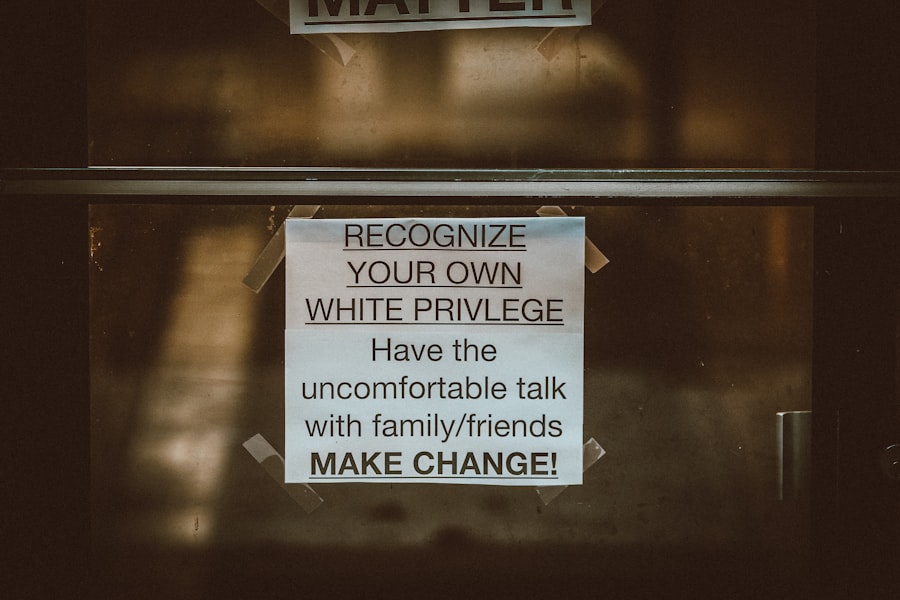Cognitive biases are systematic patterns of deviation from norm or rationality in judgment. They are the mental shortcuts that your brain takes to process information quickly, often leading to errors in thinking. These biases arise from the brain’s attempt to simplify information processing, allowing you to make decisions more efficiently.
However, while these shortcuts can be beneficial in some situations, they can also lead to flawed reasoning and poor decision-making. Understanding cognitive biases is crucial because they influence how you perceive the world, interpret information, and ultimately make choices. You might not even be aware of the cognitive biases that affect your daily life.
From the way you interpret news articles to how you make personal and professional decisions, these biases can subtly shape your thoughts and actions. They can lead you to favor certain information over others, skewing your understanding of reality. By recognizing these biases, you can begin to take steps toward more rational thinking and better decision-making processes.
Awareness is the first step in mitigating their effects and improving your overall judgment.
Key Takeaways
- Cognitive biases are systematic patterns of deviation from rationality in judgment and decision making.
- Cognitive biases play a significant role in decision making by influencing our perceptions and leading to irrational choices.
- There are various types of cognitive biases, including confirmation bias, availability heuristic, anchoring bias, overconfidence bias, framing effect, sunk cost fallacy, and halo effect.
- Confirmation bias is the tendency to search for, interpret, favor, and recall information in a way that confirms one’s preexisting beliefs or hypotheses.
- Availability heuristic is the mental shortcut that relies on immediate examples that come to mind when evaluating a specific topic, concept, method, or decision.
The Role of Cognitive Biases in Decision Making
Cognitive biases play a significant role in decision-making processes, often steering you toward choices that may not be in your best interest. When faced with complex decisions, your brain relies on these biases to simplify the information at hand. This reliance can lead to quick conclusions that feel right but may not be based on a thorough analysis of the facts.
For instance, when you encounter a situation that requires immediate action, your brain might default to a cognitive bias that prioritizes speed over accuracy, resulting in hasty decisions. Moreover, cognitive biases can create a feedback loop that reinforces poor decision-making. Once you make a choice influenced by a bias, you may seek out information that confirms your decision while ignoring evidence that contradicts it.
This tendency can lead to a cycle of misjudgment where you become increasingly entrenched in your beliefs and decisions, making it harder to change course even when new information arises. Understanding how these biases operate can empower you to break free from this cycle and make more informed choices.
Types of Cognitive Biases

Cognitive biases come in various forms, each affecting your thought processes in unique ways. Some biases are more prevalent than others, and their impact can vary depending on the context of the decision at hand. For example, some biases may lead you to overestimate your knowledge or abilities, while others might cause you to underestimate risks or overlook critical information.
Familiarizing yourself with different types of cognitive biases can help you identify them in your own thinking and improve your decision-making skills. Among the most common types of cognitive biases are confirmation bias, availability heuristic, anchoring bias, overconfidence bias, framing effect, sunk cost fallacy, and halo effect. Each of these biases has distinct characteristics and implications for how you process information and make decisions.
By exploring these biases in detail, you can gain insights into how they influence your behavior and learn strategies to counteract their effects.
Confirmation Bias
| Confirmation Bias Metrics | Definition |
|---|---|
| Confirmation Bias | The tendency to search for, interpret, favor, and recall information in a way that confirms one’s preexisting beliefs or hypotheses. |
| Impact | Can lead to selective exposure to information, overconfidence in one’s beliefs, and resistance to change even in the face of contradictory evidence. |
| Examples | Political polarization, conspiracy theories, and the tendency to seek out information that supports one’s own views while dismissing opposing viewpoints. |
Confirmation bias is one of the most well-known cognitive biases and refers to the tendency to search for, interpret, and remember information in a way that confirms your preexisting beliefs or hypotheses. When you encounter new information, your brain may unconsciously filter it through the lens of what you already believe, leading you to favor evidence that supports your views while dismissing contradictory data. This bias can significantly impact your decision-making by reinforcing existing opinions and limiting your ability to consider alternative perspectives.
You might notice confirmation bias at play in various aspects of your life, from political beliefs to personal relationships. For instance, when engaging in discussions about contentious topics, you may find yourself gravitating toward sources that align with your views while disregarding those that challenge them. This selective exposure can create echo chambers where your beliefs are continually validated but rarely questioned.
Recognizing confirmation bias is essential for fostering open-mindedness and critical thinking, allowing you to engage with diverse viewpoints and make more balanced decisions.
Availability Heuristic
The availability heuristic is another cognitive bias that affects how you assess the likelihood of events based on how easily examples come to mind. When making judgments about probabilities or risks, you may rely on recent experiences or vivid memories rather than objective data. This bias can lead you to overestimate the frequency of certain events simply because they are more memorable or emotionally charged.
For example, if you’ve recently heard about a plane crash in the news, you might perceive air travel as riskier than it actually is due to the vividness of that event. This heuristic can have significant implications for decision-making in various contexts, including health, finance, and personal safety. You may find yourself making choices based on sensationalized news stories or anecdotal evidence rather than statistical facts.
By understanding the availability heuristic, you can strive to seek out comprehensive data and consider a broader range of information before making judgments about risks or probabilities.
Anchoring Bias

Anchoring bias occurs when you rely too heavily on the first piece of information encountered when making decisions. This initial “anchor” serves as a reference point that influences subsequent judgments and evaluations. For instance, if you’re negotiating a salary and the first number mentioned is significantly higher than what you expected, that figure may anchor your expectations for the rest of the negotiation process.
Even if subsequent offers are lower than the anchor point, they may still seem reasonable in comparison. This bias can manifest in various situations beyond negotiations, such as pricing decisions or assessments of value. When shopping for a product, the initial price you see can anchor your perception of what constitutes a fair price, affecting your willingness to pay or negotiate.
Being aware of anchoring bias allows you to critically evaluate initial information and consider alternative perspectives before settling on a decision.
Overconfidence Bias
Overconfidence bias refers to the tendency for individuals to overestimate their knowledge, skills, or abilities. This bias can lead you to take unnecessary risks or make decisions without adequately considering potential pitfalls. For example, if you’re confident in your ability to predict market trends based on limited experience or knowledge, you may invest heavily without conducting thorough research.
This overestimation of competence can result in significant losses or missed opportunities.
By acknowledging that everyone has limitations and that uncertainty is inherent in many situations, you can approach decision-making with greater caution and diligence.
Seeking feedback from others and remaining open to learning can help counteract this bias and lead to more informed choices.
Framing Effect
The framing effect occurs when the way information is presented influences your perception and decision-making process. Essentially, how a choice is framed—whether as a gain or a loss—can significantly impact your response. For instance, if you’re presented with a medical treatment described as having a 90% success rate versus one with a 10% failure rate, you’re likely to perceive the former more favorably despite both statements conveying the same information.
This bias highlights the importance of language and context in shaping perceptions. In marketing and advertising, for example, companies often use framing techniques to persuade consumers by emphasizing positive aspects while downplaying negatives. Being aware of the framing effect allows you to critically evaluate how information is presented and make decisions based on objective facts rather than emotional responses triggered by specific wording.
Sunk Cost Fallacy
The sunk cost fallacy refers to the tendency to continue investing time, money, or resources into a project or decision based on what has already been invested rather than evaluating its current value or potential for success. You might find yourself holding onto a failing investment simply because you’ve already poured significant resources into it, believing that abandoning it would mean wasting those efforts. This fallacy can lead to poor decision-making as it encourages you to ignore future prospects in favor of past investments.
Recognizing the sunk cost fallacy is essential for making rational choices based on current circumstances rather than emotional attachments to previous investments. By focusing on future potential rather than past losses, you can make more objective decisions that align with your goals.
Halo Effect
The halo effect is a cognitive bias where your overall impression of a person or entity influences your judgments about their specific traits or abilities. If you perceive someone as likable or attractive, you’re more likely to assume they possess other positive qualities as well—such as intelligence or competence—regardless of evidence supporting those assumptions. This bias can significantly impact hiring decisions, performance evaluations, and interpersonal relationships.
In professional settings, the halo effect can lead to favoritism or unfair assessments based on superficial attributes rather than actual performance or qualifications. Being aware of this bias allows you to evaluate individuals more objectively by separating personal impressions from factual assessments of their abilities or contributions.
How to Overcome Cognitive Biases
Overcoming cognitive biases requires conscious effort and self-awareness. The first step is recognizing that everyone is susceptible to these biases; acknowledging their existence is crucial for mitigating their effects on your decision-making processes. Once you’re aware of specific biases that may influence your thinking, you can implement strategies to counteract them.
One effective approach is seeking diverse perspectives when making decisions. Engaging with individuals who hold different viewpoints can challenge your assumptions and broaden your understanding of complex issues. Additionally, practicing critical thinking skills—such as questioning assumptions and evaluating evidence—can help you develop a more balanced approach to decision-making.
Another strategy involves slowing down your thought processes when faced with significant choices. Taking time to reflect on potential biases at play allows for more deliberate consideration of options rather than relying on instinctive reactions influenced by cognitive shortcuts.
In conclusion, understanding cognitive biases is essential for improving decision-making skills and fostering rational thinking. By recognizing how these biases operate and implementing strategies to counteract their effects, you can make more informed choices that align with your goals and values. Embracing awareness and critical thinking will empower you to navigate complex situations with greater clarity and confidence.
Cognitive biases are systematic patterns of deviation from norm or rationality in judgment, and understanding them is crucial for improving decision-making processes. A related article that delves into the intricacies of cognitive biases can be found on Unplugged Psych, a platform dedicated to exploring psychological concepts in depth. For more insights, you can read the article on their website by following this link: Unplugged Psych. This resource provides a comprehensive overview of various cognitive biases and their implications in everyday life, making it an excellent companion piece to any cognitive bias list.
FAQs
What is a cognitive bias?
A cognitive bias is a systematic pattern of deviation from norm or rationality in judgment, whereby inferences about other people and situations may be drawn in an illogical fashion.
What are some common examples of cognitive biases?
Some common examples of cognitive biases include confirmation bias, availability heuristic, anchoring bias, and the halo effect.
How do cognitive biases affect decision making?
Cognitive biases can affect decision making by leading individuals to make irrational judgments and decisions based on faulty reasoning or incomplete information.
Can cognitive biases be overcome?
While it may be difficult to completely overcome cognitive biases, individuals can work to mitigate their effects by being aware of their existence and actively seeking out diverse perspectives and information.
How are cognitive biases relevant in everyday life?
Cognitive biases are relevant in everyday life as they can impact how individuals perceive and interpret information, make decisions, and interact with others. Recognizing and understanding cognitive biases can help individuals make more informed choices and avoid common pitfalls in thinking.




